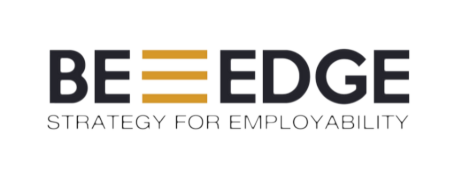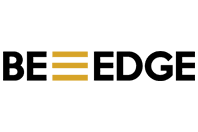
ENTERING UNKNOWN TERRITORY: CRAFTING STRATEGY FOR INNOVATION
by Jill Kligler
September 11, 2024
Innovation is more abundant than ever. The digital age and pandemic have completely transformed how our world operates. From the metaverse to artificial intelligence to the unlimited internet, innovations are becoming widely adopted and constantly progressing.
The pandemic has accelerated these changes further, with nearly all businesses reporting it has sped up the digital transformation processes in their organizations. These impacts will continue to have a lasting impact on people and organizations alike. Additionally, new consumer trends and rapidly changing norms are giving rise to emerging needs. Nine out of ten businesses believe they will have to make changes to their business model to stay economically viable by 2023. There is a strong need for innovative thinking and creative problem-solving amidst these increasingly unknown territories.
Whether new to the workforce or an experienced professional, a high level of adaptability and mindfulness is required to thrive in these emerging environments. This begs the question of how do we craft personal strategy for innovation?
ASSESS THE EXTERNAL ENVIRONMENT
An awareness of external factors is key in identifying opportunities in unknown territories. The PESTEL analysis helps to identify political, economic, sociocultural, technological, ecological, and legal factors that affect you and your field. Reaching beyond your industry and market further allows you to understand and anticipate changes before it directly impacts you.
Depending on the industry, some factors may hold greater weight than others. My industry is social media marketing, and therefore sociocultural and technological factors were most important in identifying opportunities for innovation. Rapid technological advancement and changes to consumer preferences are essential external influences due to my field’s position in the growth cycle stage. Innovations are plentiful in this industry with emerging platforms like TikTok, and trending features such as live streaming. It is necessary for brands to stay on top of the latest innovations to gain and sustain a competitive advantage.
TAKE A PERSONAL INVENTORY
The next step is taking an inventory of your personal resources and capabilities. The VRIO analysis is useful here in organizing your inventory by value, rarity, ability to imitate, and their organization bandwidth to capture value. From there, it creates access to assess:
- What can you provide?
- What can you improve or need to prioritize?
- What can you gain?
- What should you no longer invest resources into?
Analyzing your internal environment allows you to identify where value lies and how you can diversify beyond your current core competencies.
Throughout my work experiences, I solidified my passion in social media marketing and built a multi-dimensional profile through self-determination and taking advantage of opportunities. I’ve had incredible opportunities to work with different industries, start-ups to corporate, agency and in-house – giving me a broad view of digital marketing in a range of businesses. Since social media is a relatively new, fast changing industry, it has pushed me to focus on innovative thinking and adaptability. I narrowed down my core internal strength to strategy development, where I am most organized to capture value.
IDENTIFY OPPORTUNITIES
Based on the above internal and external analysis, the following action is to bring it all together and determine competitive advantages in yourself and your environment. By matching key strengths and opportunities, you’re able to establish where the most valuable opportunities are.
Personally, social media analytics was one of my major matches. Although traditional marketing analysts are a widely accepted role, social media data analyst positions are an unrecognized need in the industry. Since it is a developing industry, the way analytics are extracted, analyzed, and presented is in a constant state of change due to API limitations and varying features. The need for analytics is significant in the industry, and the resources are scarce.
WHAT’S NEXT?
Formulating an implementation plan looks different depending on factors including stage of experience, industries, markets, and positions. It could mean utilizing new talent, improving processes, ideating new initiatives, expanding your portfolio, and so on. As a recent graduate, for me it means developing my digital knowledge, providing my perspective, and taking initiative. Through my short-term work experiences during college, my mindset has always been to leave a business better than when I started. I’m fortunate that all my employers, despite me still being a student, trusted me with as much responsibility. Even with my unique digital perspective as Gen Z, I was constantly researching and learning from my mentors, who provided me with plentiful opportunities to apply my learnings and ideas on a vast scale.

This process isn’t a one and done. To be successful, it’s vital to be in a constant state of re-evaluation of yourself and the market. We each have so much to provide, regardless and especially because of differences in experience, knowledge, and skills. The need for an innovative mindset is necessary in these unknown territories, as rapidly changing environments require constant progress and re-evaluation.
About the Author
 Jill Kligler is a recent graduate from Northeastern University, where she majored in Business Administration with a concentration in Marketing. Born in New York and raised in Hong Kong, her digital marketing expertise comes from working in a variety of global industries where she established her passion for social media as a vehicle for progress, connection, and growth.
Jill Kligler is a recent graduate from Northeastern University, where she majored in Business Administration with a concentration in Marketing. Born in New York and raised in Hong Kong, her digital marketing expertise comes from working in a variety of global industries where she established her passion for social media as a vehicle for progress, connection, and growth.


